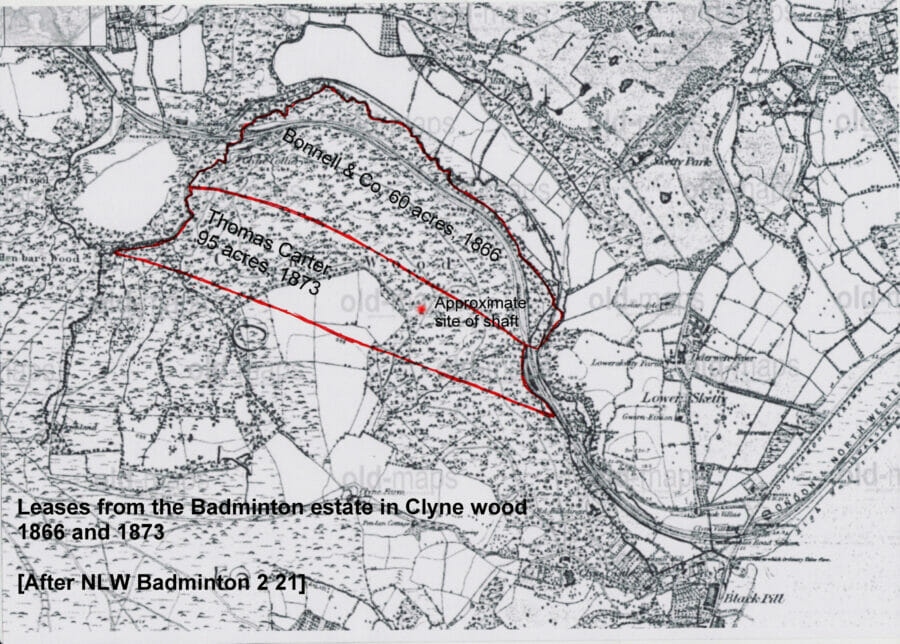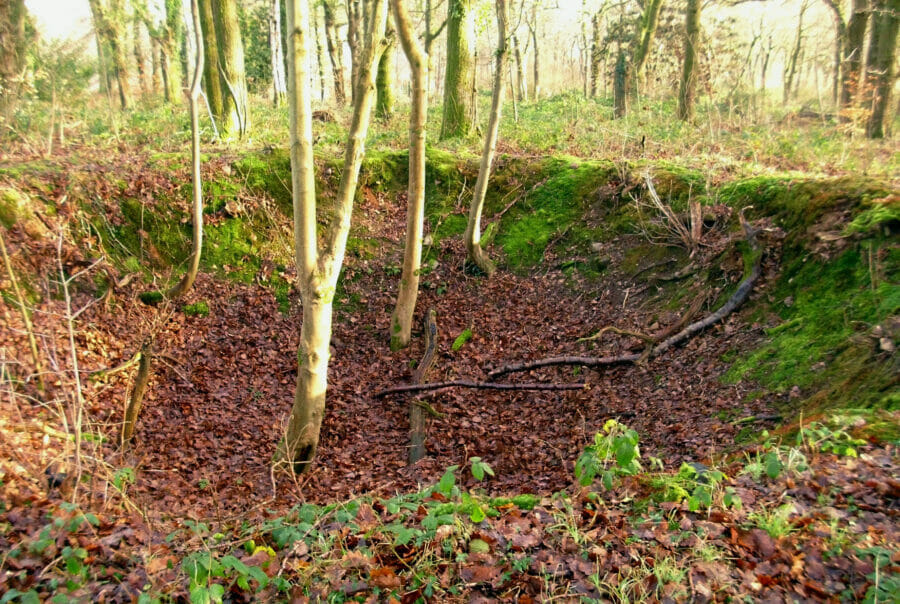Introduction
There is a large shaft, about 10 feet deep, in the woodland to the east (downhill side) of the upper track to Keeper’s Cottage. It has been interpreted as a bell pit, but it is considerably larger than any other known bell pit in the valley and is isolated whereas bell pits are characteristically found in runs or clusters. For these reasons, an alternative interpretation appears to be sought. It is suggested that it represents a shaft commenced by the Swansea Collieries Co Ltd in about 1873 but abandoned before completion.
In 1873 the Duke of Beaufort granted Thomas Carter a mineral lease of 95 acres of coal under Clyne Wood and Clyne Farm adjoining the 60 acres that had previously been granted to Bonnell & Co of the Clyne Wood Colliery. Carter was described as a colliery proprietor of The Exchange, Southwark. He can probably be identified with the ‘wealthy colliery proprietor of Fishguard, Pembrokeshire’, who was found dead in the Bush Hotel, Swansea on 24 January 1876. In partnership with several rather dubious individuals, he formed the Swansea Collieries Co which was registered on 5 June 1873. It was wound up in February 1876 and the lease was determined by the Badminton Estate on 6 October 1880.
During the proceedings when the company’s shareholders petitioned for a winding up order it was stated that the company had started to sink a shaft, but abandoned it without ever having brought any coal to market. The dimensions of this pit are more in keeping with those of a 19th-century deep shaft than with those of a bell pit of an earlier period. It has an appearance of incompleteness and is located within the area leased to the company. It is for these reasons that the tentative identification of this shaft with the pit known to have been started but then abandoned by the Swansea Collieries Co Ltd is made.
Map


